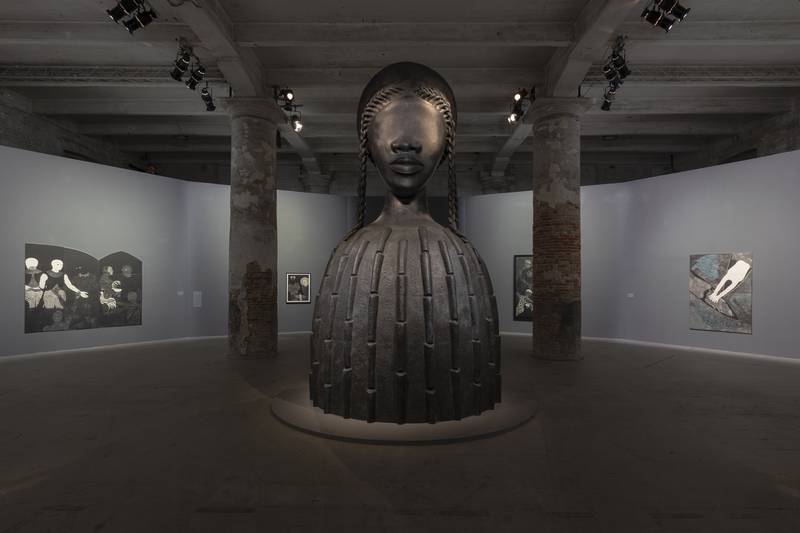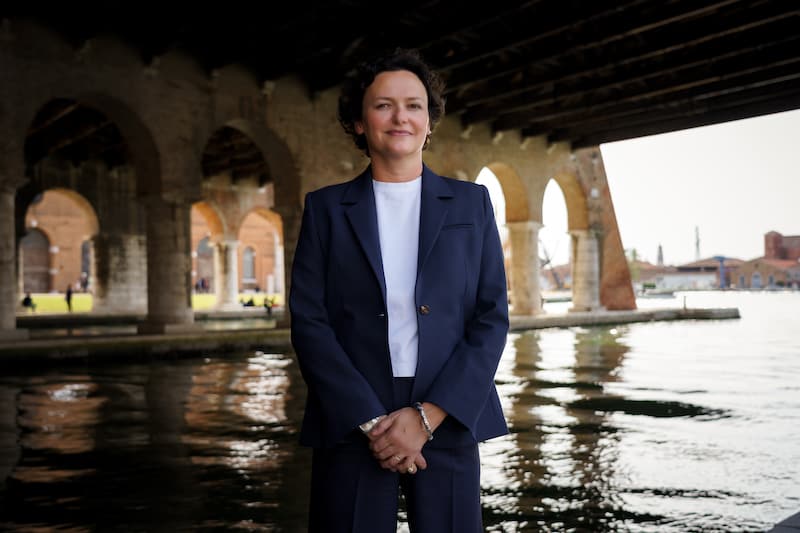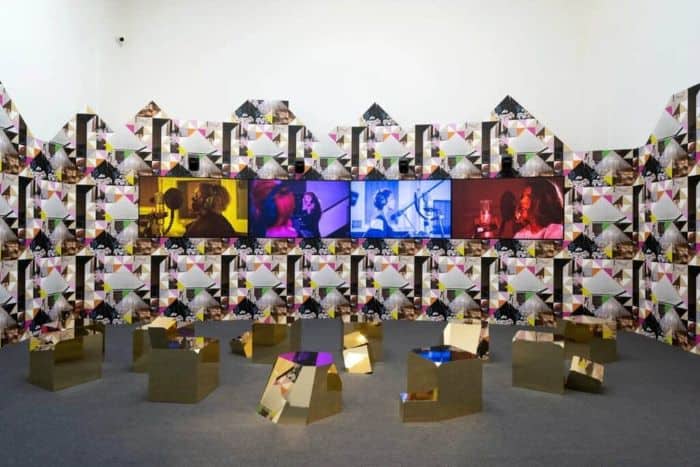Articles and Features
The 2022 Venice Biennale at a Glance: Highlights & Awards

By Adam Hencz
The “Olympics Of The Art World,” as many refer to the half-year-long exposition spread across the floating city, opened its doors to the public on April 23rd. One of the most anticipated art world events in 2022, the 59th Venice Biennale is the Biennale of the firsts in several ways. New York-based curator Cecilia Alemani, the first Italian woman director of the international exhibition, has chosen to include a majority of women and gender nonconforming artists for the first time in the Biennale’s centennial history. Not only do women outnumber male artists in the main halls of the exhibition by a ratio of roughly nine to one, but also prominent pavilions are being represented by Black women, with spotlights on the work of non-binary, disabled, and trans artists. This Biennale is also notable for a handful of inaugural pavilions, the references to myth and spirituality, and new trends in art spanning embroidery, painting, video, and digital art.
For this week’s coverage of the Venice Biennale 2022, we focus on the International Exhibition, this year’s award winners as well as special mentions.

The International Exhibition: Cecilia Alemani’s ‘The Milk of Dreams’
This year, the main exhibition has been curated by New York-based Italian curator, Cecilia Alemani, currently Director and Chief Curator of High Line Art, an urban art program in New York. The show is titled The Milk of Dreams, after Leonora Carrington’s writings. The exhibition examines issues of a world struck by the aftermath of a global pandemic, the war in Ukraine, and the now terrifyingly close point of no return in climate change.
The International Exhibition features more than 200 artists from 58 countries with works revolving around questions such as: How is the definition of humanity changing? What does the concept of life mean? What distinguishes plants from the animal world and humans from non-humans? What are our responsibilities to each other and to the Earth? What would the world look like without humanity?
Alemani, who was the first to face a one-year postponement of the Venice Biennale since World War II, seeks to answer these questions at two locations, the Arsenale and the Central Pavilion in the Giardini. In addition, the pavilions of eighty nations and a number of other exhibitions throughout Venice are articulated around three main thematic threads of the Biennale: the idea of metamorphosis; the relationship between individuals and technology; and our relationship with what surrounds us and the planet as a whole. The three themes are framed by five time capsules, placing the 19th, 20th, and 21st century works simultaneously in an art historical context and in dialogue with each other. A series of 30 collateral events admitted by the curator and promoted by non-profit international and national institutions, take place in several locations, from Katharina Grosse’s theatrical new installation at Espace Louis Vuitton to Bosco Sodi’s characteristic paintings in Palazzo Vendramin Grimani.
Simone Leigh and Sonia Boyce win the 2022 Venice Biennale’s top honors
The two top honors of the Venice Biennale, the Golden Lions, were awarded to Simone Leigh and Sonia Boyce this year for the Best Participant of the main exhibition and for Best National Participation, respectively. The prizes were presented during the Awards Ceremony and Opening at Ca’ Giustinian on April 23rd.
Leigh’s work Brick House (2019) was featured prominently in the Arsenale section of the main show, as it kicks off with a circular room devoted to Leigh’s sculpture encircled by late 20th-century Cuban printmaker Belkis Ayón’s works. In Great Britain’s pavilion, Sonia Boyce’s installation titled Feeling Her Way includes video works that feature five Black female musicians of various generations improvising, interacting, and playing with their voices.

Ali Cherri received the Silver Lion award for Promising Young Artist. She was awarded for her multidisciplinary and complex presentation that meditates on Earth, fire, and water in a mythical dimension, reflecting on The Milk of Dreams show’s alternative narratives.
Special mentions of National Participants
Zineb Sedira’s French Pavilion was awarded in recognition of the long-standing interchange of ideas and solidarity as a means of building stronger ties across the diaspora. In her work, she examines the complex history of cinema outside of the West, as well as the different accounts of resistance.
A first-time participant at the Venice Biennale, Uganda was recognized for its vision, ambition, and dedication to art and working in their country. The pavilion featuring works by Acaye Kerunen and Collin Sekajugo received a special mention for its demonstration of sustainability as an actionable practice, not simply a trend, a policy, or a notion.
Katharina Fritsch and Cecilia Vicuña: Golden Lions for Lifetime Achievement
Katharina Fritsch and Cecilia Vicuña are featured in the biennial’s main show this year as recipients of the Venice Biennale’s Golden Lion for Lifetime Achievement award. German sculptor Katharina Fritsch is known for her iconic sculptures that show the tension between reality and apparition, between the surreal and the familiar. Chilean poet and artist Cecilia Vicuña is noted for her commitment to feminist forms and her works revolving around themes of extinction, memory, and cultural homogenization.
The award is given to artists in the mid- to late stages of their careers, and it is typically received by one artist as a career-affirming event. This is the first time in almost a decade that two artists’ works have been acknowledged for Lifetime Achievement.
Wondering where to start?



